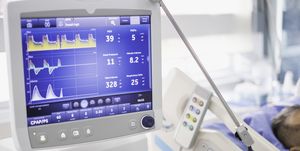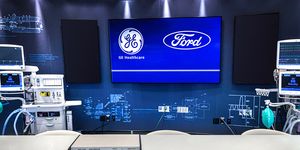- Tesla posted a video of its engineering team working on a ventilator made mostly from car parts, including parts from the Model 3.
- The team behind the ventilator acknowledges that they’re still working on the system and it’s not ready for use.
- Once ready, the Tesla-built ventilator will still have to undergo FDA testing and approval before being used by hospitals. Even then it’s still likely it won’t be used for the worst coronavirus cases.
Many companies have stepped up to help the medical world battle the coronavirus pandemic. Automakers and others are building face shield, donating or producing masks and to help this affected by the virus, helping to build or even designing their own ventilator. According to a video posted by Tesla, the company is designing its own.
The Tesla engineering team gave a video tour of its efforts to design its own ventilator. The goal of the team is to create a ventilator out of car parts so it doesn’t take much-needed supplies away from traditional medical device manufacturers. In the video, Tesla engineering director Joe Mardall (pictured above) explains, “We want to use parts that we know really well, we know the reliability of, and we can go really fast, and they’re available in volume.”
The design uses parts from the Model 3, including the display, which now shows a patient’s vital signs instead of a map or goofy games. The car’s infotainment computer directs vehicle controllers that talk to valves that move the air through a manifold. The mixing chamber (where oxygen and air mix together) is a suspension air tank from automotive supplier Continental.
It’s important to point out that these are also not the ventilators that Tesla purchased and donated to hospitals. Turns out some of those were the wrong type of ventilator, according to health experts. Fortunately, some hospitals were able to alter those devices to allow them to be used on intubated patients.
The issue is that all these devices still need FDA approval before they can be deployed. It’s typically a long process, but the Secretary of the Department of Health and Human Services (HHS) has issued an Emergency Use Authorization (EUA) that permits the use of “alternative products” to respond to the shortage of medical devices during the COVID-19 pandemic. For instance, anesthesia gas machines can be used as ventilators and modifying ventilator accessories like tubing is allowed.
But all those modified parts and altered devices still need FDA approval. Plus, not all ventilators are the same. The ones needed by COVID-19 patients need to be more robust. “Very quickly, they go from being able to breathe and not being able to breathe, and require not just an average ventilator but a critical-care ventilator to . . . give them a fighting chance,” according to Chris Brooks, chief strategy officer of the ventilation company Ventec Life Systems.
Brooks’s company has teamed up with GM to scale up the production of the VOCSON compact critical-care ventilator, which can be used in hospitals and at home. Using GM’s supply resources and Kokomo, Indiana, plant to build the device, the two companies are churning out devices that are already FDA approved and can be used right away by the medical field.
Brooks said that the ventilators needed by COVID patients are powerful, precise machines.
“There are a lot of well-intentioned devices out there and projects to create a ventilator overnight or to create a low-cost ventilator, and certainly for some patients that might be useful and effective. But what we know about COVID is that these patients go into full respiratory distress, and they require a powerful and precise critical-care ventilator,” Brooks told Car and Driver. “If you overinflate the lungs, you can cause harm or death. If you underinflate the lungs, you can cause harm or death.”
That’s not to say what Tesla is doing isn’t important. Ventilators are needed by patients of all types. Plus it helps that, at least based on a tweet from CEO Elon Musk, it’s very possible that Tesla didn’t design its ventilator in a vacuum. The company has been in talks with Ireland-based medical device maker Medtronic, which reportedly shared engineering information with Tesla to help it build its own system.
Medtronic has stated that Musk’s other company Space X is helping by making vital components for its ventilators.
Tesla’s team makes it very clear that this is a design and that it still has a lot of work to do. But, they say, the team is “giving its best effort to help people out there.” A commendable act from folks who typically work on vehicles, along with a growing number of non-automotive companies that are designing ventilators, including vacuum maker Dyson and Virgin Galactic. Whether it bears fruit—and soon enough—is another story, but there will likely be a need for this equipment beyond the current crisis.
Source: Motor - aranddriver.com






